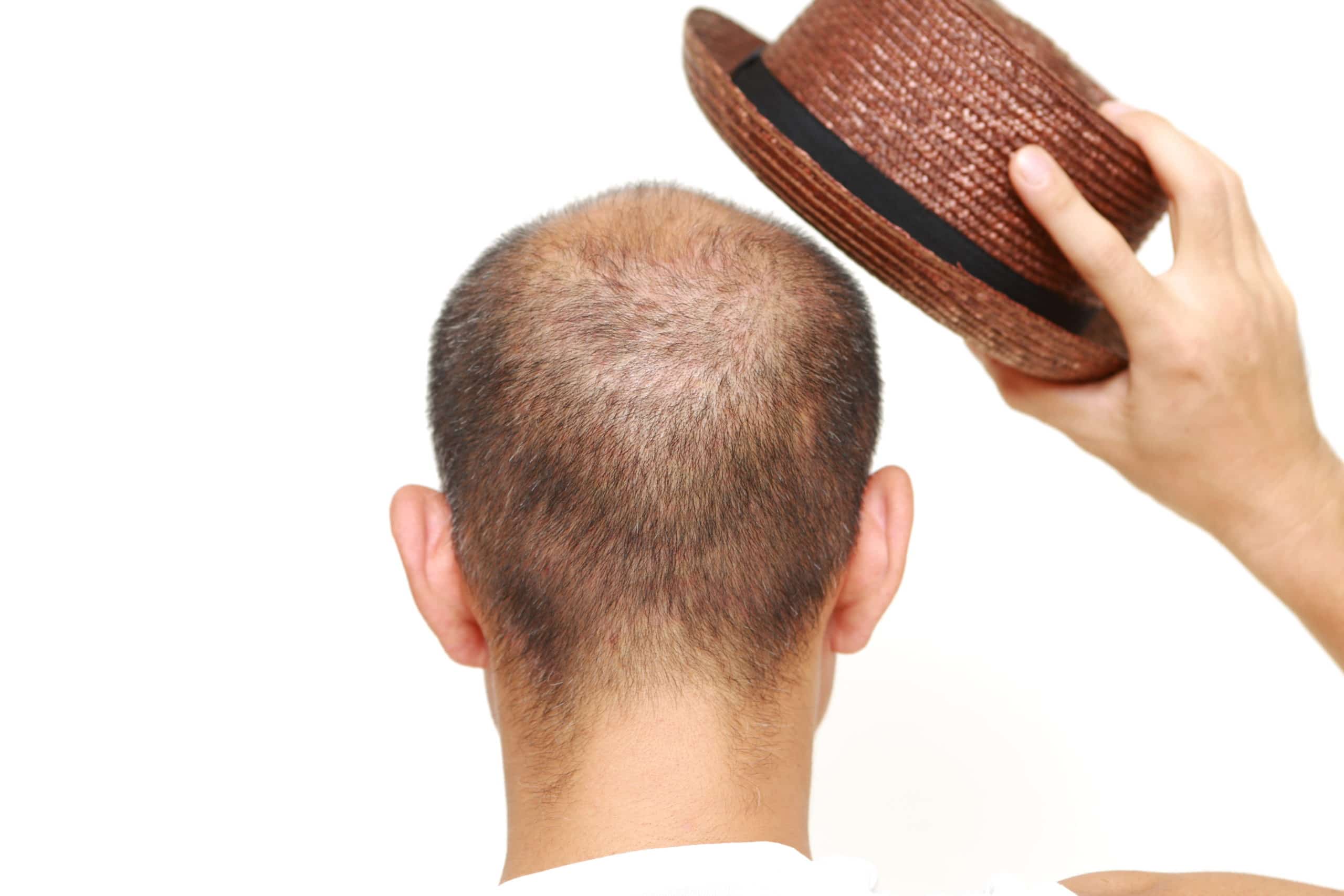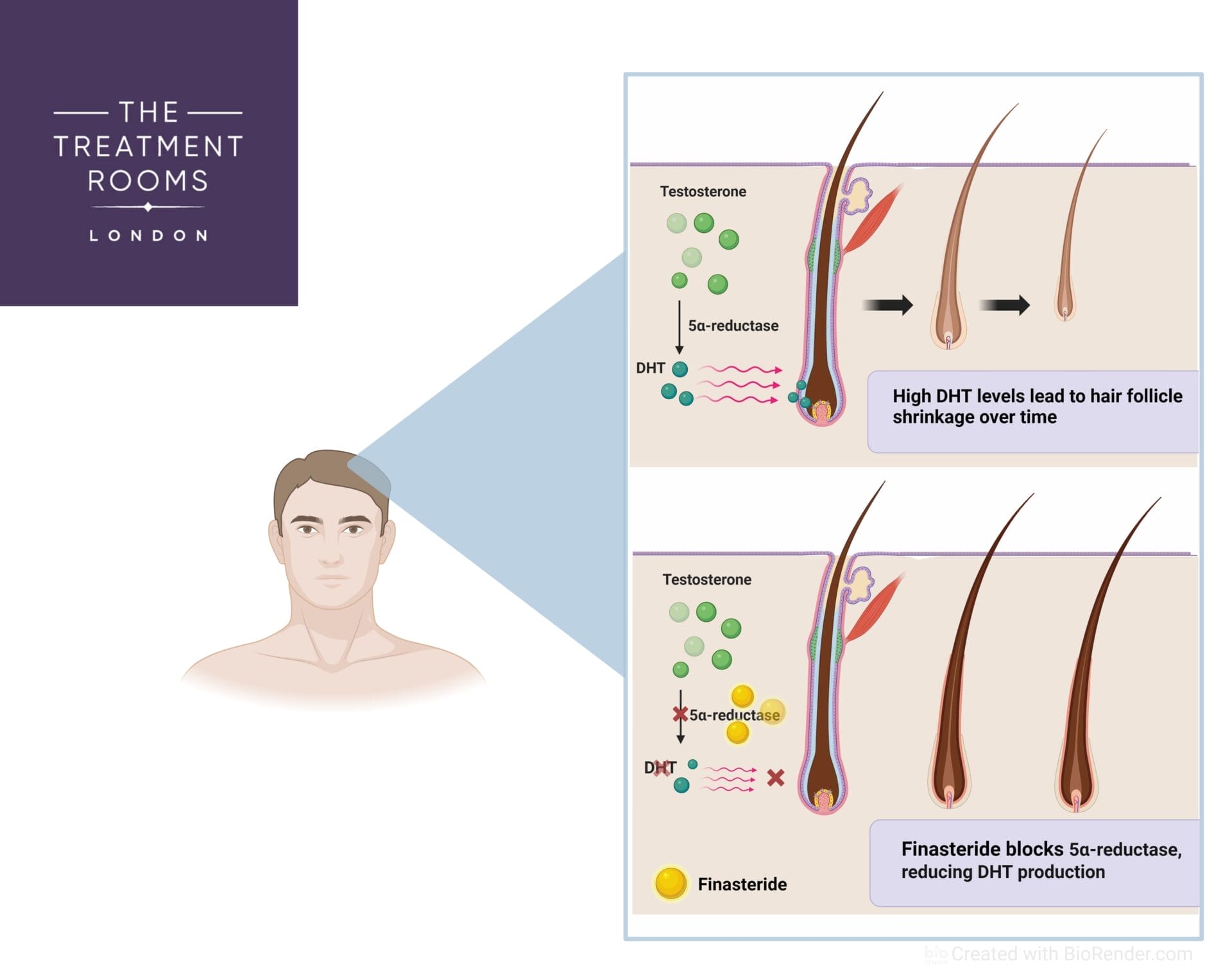If you’re a female experiencing hair loss you may be considering getting a female hair transplant. We understand that each woman’s hair loss journey is unique, which is why we’ve compiled this in-depth resource to help you make informed decisions about your hair restoration options.
Whether you’re dealing with genetic factors, hormonal changes, or other underlying conditions, this guide will equip you with the knowledge to navigate through the possibilities and find the most suitable treatment for your specific needs.
Female hair transplantation: an introduction
Hair transplants can be an effective treatment for hair loss in women, but they can slightly differ from a male hair transplant. Women often have a complex cause of their hair loss and the investigations required before surgery is considered can be extensive.
Eligibility for a female hair transplant will depend on several different factors, such as:
- The reason behind your hair loss
- How much hair loss you are experiencing and what requires transplanting
- How healthy the rest of your hair is, including your donor area
- If your hair loss is likely to worsen soon
Female Hair Transplant Surgery
Having a hair transplant as a female can help restore hair where you have lost it. This can be in the hairline, temples or hair parting.
You may also consider having surgery to lower a high hairline, you can read more about this topic in our dedicated article: female hairline lowering transplant.
Before you consider having a hair transplant, it is important to explore the underlying reasons for hair loss in a female. In our clinic we request female patients to have some blood tests to check their health before deciding to undergo a female hair transplant. These can include:
- Full blood count
- Iron studies
- PCOS hormone profile
- Thyroid function
- B12 level
- Folate level
- Vitamin D level
Female hair transplant preparation
Before you have a hair transplant, you should book a consultation with a hair transplant surgeon. This appointment will involve an evaluation of your current hair and loss so we can determine the best course of action for you. The consultation also means we can personalise your hair transplant plan should you require one.
Once you have booked your hair transplant, you will receive some guidelines you must follow in preparation. These ensure that your scalp is as healthy as possible for your procedure.
These guidelines can include:
- Avoiding smoking and drinking excessive amounts of alcohol
- Stop taking any hair loss medications you may be on
- Do not cut or dye your hair before the procedure as this can irritate you skin prior to surgery
As part of your consultation, you surgeon will have taken you through how we can perform surgery and how much hair will need to be shaved or kept long for your procedure. You read more about the different shave types in our dedicated article: unshaven hair transplant. We perform the shave on the day of surgery so you won’t need to worry about it in preparation for the day. However, some female patients like to have a fringe cut before their hair transplant to allow them to style their hair over their hairline and conceal their surgery easier in their recovery.
Female hair transplant: how does it work?
Women can have two types of hair transplant procedures — follicular unit transplantation (FUT) and follicular unit excision (FUE). Our surgeons perform hair transplants while you are awake, but we numb the area with a local anaesthetic. So, you shouldn’t feel any pain during your transplant.
An FUT hair transplant is where the surgeon removes a strip of your scalp (grafts) containing hair follicles from your head and transplants them into your scalp through small incisions. The surgeon stitches the area where they took the grafts, and covers the resulting linear scar at the back with the rest of your hair.
An FUE hair transplant is where the surgeon excises hair follicles from the back and sides of your head. They reinsert these follicles into your scalp using a puncturing tool. With this technique, you should have small dot-like scarring at the back and sides of your head which you can conceal with a shorter haircut.

Treatments For A Female High Hairline
Having a high hairline without suffering from hair loss can cause a fair amount of anxiety. You may be styling your hair to cover your hairline or temples. There are two main ways you can treat a high hairline:
- A hair transplant to implant new hair into a lower hairline
- Forehead reduction surgery (hairline lowering surgery) or scalp advancement

Hair Transplant Surgery For A High Hairline
Hair transplant surgery to lower your hairline is a good technique for those with a peaked hairline and deep temples, similar to the image below. The main issue female patients complain of is that their hairline is not the right shape and is too high. Both issues can be addressed by undergoing a hair transplant. The procedure is performed in one day, and the results are seen one year post-surgery.
Hairline Lowering Hair Transplant Cost
The cost of female hairline lowering hair transplant surgery ranges between £5,000- £8,000 and is dependent on the size of surgery. This can only be costed during an in-person consultation with our hair transplant surgeons.

What Hairline Shape Should You Go For?
When you lower your hairline you will need to discuss what suits you best with your hair transplant surgeon. This will involve a consideration of:
- Where is your natural hairline?
- What are the natural muscle positions in your forehead?
- What are your natural aesthetic proportions and what hairline position and shape would suit you best?
Can You Lose Hair After Your Hairline Lowering Procedure?
The risk of ongoing hair loss after having your hairline lowered will always be there. It is important to optimise your health and well-being in ensure this risk is kept at bay. All patients are encouraged to check their blood tests to ensure their Iron, B12, Vitamin D and Folate levels are normal alongside normal hormone levels for their Thyroid gland and female sex hormones.
Our female patients may also be encouraged to avoid repeatedly tying their hair too tightly over time, as this can cause further hair loss in the temples, a condition called traction alopecia. This may need to be treated with a hair transplant.
If you lose more hair after your procedure, you will need to explore and treat the cause of your hair loss, and you may need to consider having another hair transplant to fill in the areas that have thinned.
Trans-Female Hairline Lowering Transplant
If you identify as a trans-female who would like to lower and feminise a hairline, then we can also help. We have an extensive portfolio of transgender before and after hair transplant.
Post-transplant care and recovery
After your female hair transplant, you can expect some discomfort for the first few days once the local anaesthetic wears off. Over-the-counter anti-inflammatories like ibuprofen can help to reduce swelling and pain.
When in recovery, you must follow any aftercare advice the surgeon gives you. You will need to take at least five days off from work to rest and recover from the procedure. You must also avoid strenuous activities such as exercise for the first two weeks.
While you’re recovering, you must not pick any scabs that form on your scalp, as it can disrupt the grafts. The scabs will naturally fall off within a few weeks. You can read more about this here: When can you remove the scabs after your transplant? It can take up to 14 days for the implants to fully embed in your scalp, so you must treat your scalp with care. Please do not wash your hair until at least 4 days after your procedure, and refrain from styling it with any products until you reach the 14-day mark.
Once transplanted hair is fully implanted, you can treat it the same as your regular hair, but it requires good care. For example, it is best to wash your hair in lukewarm water, always use a heat protectant, and be gentle when brushing or combing it.
Expected results and follow-up
Results from a hair transplant can take time and patience. Most people will see noticeable changes six months after their transplant. You can view a timeline of the journey here: Hair Transplant Timeline. However, complete results can take anywhere from 12 to 18 months because you must wait for the transplanted hairs to shed and regrow. Most female patients tend to grow their hair longer, so it will take longer to regrow to a length that you may be used to.
You can expect your results to give you thicker hair in areas where you previously had thin hair, as well as fill any gaps caused by loss. The results should last you a lifetime, but further hair loss can occur for reasons such as age or hormonal changes.
Cost of female hair transplant surgery
The price of a female hair transplant can vary and range from £4,000 to £10,000 or more — it all depends on how complex your procedure is and how many grafts you need.
At The Treatment Rooms London, we charge £5 to £6 per graft, and the minimum number of grafts we offer is 500. If you require more than 2,000 grafts, we recommend scheduling your appointment over two days.
Causes of female hair loss
There are all sorts of reasons why you might experience hair loss as a woman, from stress to genetics. Even certain hairstyles can lead to hair loss!
Here are the most common types of hair loss in women and the typical causes of them:
- Androgenetic alopecia – a thinning of the hair caused by an increase in androgens (sex hormones) in your body. This can be for several reasons, such as polycystic ovarian syndrome and menopause.
- Telogen effluvium – hair loss caused by an event, such as pregnancy and giving birth, major surgery or stress. The trauma causes your hair to transition into the resting phase of its growth cycle. Then, in the following weeks, it transitions into the shedding phase, during which you lose clumps of hair.
- Anagen effluvium – hair loss often associated with chemotherapy, which damages the hair follicle on a cellular level.
- Alopecia areata – this hair loss is caused by an inflammatory reaction where your immune system attacks your hair follicles.
- Traction alopecia – tight hairstyles that pull on your hair and scalp may lead to repeated tension that causes your hair to fall out.
- Vitamin D Deficiency– being deficient in Vitamin D can also affect hair loss, making your hair thinner over time.
- Iron Deficiency – being iron deficient can increase hair loss, particularly in those who suffer from heavy menstruation.
Other hormonal imbalances and changes can also result in hair loss in women. Thyroid dysfunction, pregnancy and menopause can all shift your usual hormone levels and affect your hair.
Different treatment options for female hair loss
There are non-surgical hair loss treatments for female hair loss that can be effective. However, this will depend on the underlying cause and various factors to determine whether you can fully regrow your hair and maintain the results. Sometimes, more permanent treatments, such as hair transplants, may be warranted.
Topical solutions and medications
Doctors recommend topical solutions and medications for female hair loss. Minoxidil is a topical treatment that you rub on your scalp, with regrowth expected within eight months. You must use Minoxidil long-term if you want the regrowth to last, as once the treatment is stopped, shedding can begin again after 12 weeks.
Spironolactone is a medication that doctors sometimes prescribe to women experiencing androgenic alopecia. This medication prevents androgens in your body from working, so it could help reduce the amount of hair loss you experience.
Laser therapy
Laser therapy can be a good way to restore hair follicles in female hair loss. This treatment aims to stimulate your natural hair growth cycle and promote the growth phase, helping you achieve hair regrowth without the need for medication.
Platelet-rich plasma (PRP) treatment for women
PRP therapy involves injecting a concentrated solution of your plasma into your scalp to promote hair growth. Surgeons can use this treatment to treat androgenetic hair loss, also known as female pattern hair loss.
Book a consultation with The Treatment Rooms London.
Take the step toward a fuller hairline: schedule your complimentary consultation with our London FUE hair transplant specialists, or visit our FUE hair transplant clinic in Oxford. Additionally, we also serve Brighton and Bristol.
Our award-winning team, including leading London hair transplant surgeons Dr Fernando and Dr Vara, is here to support you every step of the way.
References
- https://www.webmd.com/skin-problems-and-treatments/hair-loss/hair-loss-types
- https://www.nhs.uk/conditions/hair-loss/coping-tips-for-women/
- https://www.healthline.com/health/hair-loss-women
- https://www.nhs.uk/medicines/spironolactone/common-questions-about-spironolactone/
- https://www.treatmentroomslondon.com/hair-loss/female-hair-loss/
- https://www.treatmentroomslondon.com/fue-hair-transplant-surgery/hair-transplant-recovery/
Share:
Authored by
Reviewed by
Book a Consultation
Related Blogs
Can Black Seed Oil Help Hair Growth?
November 26, 2025
Quick Summary: Black Seed Oil & Hair Growth Black Seed Oil for Hair: Emerging as a key…
Do Hats Cause Hair Loss? Debunking Myths & Understanding the Facts
November 26, 2025
Hats have been a global trend to wear, whether for style, warmth, or sun protection. But have…
What Happens If You Stop Using Minoxidil
November 2, 2025
If you’ve been consistently applying minoxidil to support your hair growth, have you ever wondered what happens…
Unlocking the Secrets of Anagen Follicles
October 23, 2025
Have you ever glanced at a mirror and wondered why some of your hair grows fast and…
Does Finasteride Cause Erectile Dysfunction?
October 22, 2025
Finasteride is one of the most promising medicines against male pattern baldness and benign prostatic hyperplasia (BPH)….
Zinc Supplements After Hair Transplant Surgery: What You Need to Know
October 7, 2025
Zinc is an essential nutrient in wound healing, tissue repair, and the healthy development of hair follicles….
What to Eat After a Hair Transplant: Essential Nutritional Guide
October 5, 2025
After the stress, needles, and surgeries, food becomes more than nourishment. A warm bite, a familiar flavour,…
Hair Loss Treatment That Works: A Complete Guide for 2025
October 3, 2025
Millions of men, women, and teenagers have hair loss problems. In 2025, hair restoration is going through…
What is an FUE Hair Transplant?: A Comprehensive Guide to Procedure, Recovery, and Results
October 3, 2025
Hair transplant surgery has gained popularity over the years, with more people now comfortable taking care of…











